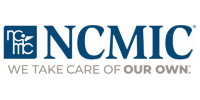In a joint statement issued today by the Palmer College of Chiropractic Board of Trustees and Chancellor Larry Patten, Mr. Patten has announced his resignation and retirement from his role with the College, effective December 31, 2008. This announcement comes following Mr. Patten’s five-year tenure with Palmer College, which included his role as Board Business Coordinator beginning in late 2003 until his appointment as Chief Executive Officer in February 2006 and, finally, Chancellor in February 2007. “While I will greatly miss Palmer College and everyone associated with it, the future of Palmer College is in great hands with the current administrative team and the Board of Trustees,” said Mr. Patten. “With the institution being in such a strong, stable position and well positioned to move ahead for even more success, I am comfortable and confident that now is the right time for this transition.” His departure will allow him to focus on World Leadership Institute (WLI), a company he founded in 1997. World Leadership Institute helps organizations and individuals set strategic direction as well as helps individuals develop their personal leadership skills. “I’ve spent a great deal of time and effort over the years developing the programs available through WLI and now I will be able to devote all of my time to seeing them produce positive results for organizations and individuals,” said Mr. Patten. “It was always my hope to complete my career in this effort. I am especially excited about our programs that are designed to help young people become champions.” As part of the statement, the Board noted that, under Mr. Patten’s leadership and direction, nearly all of the major issues that existed at Palmer when he became Chancellor have been favorably resolved. “It has been an absolute privilege to serve as Chancellor of Palmer College,” said Mr. Patten. “I’ve been honored to work with so many excellent people ranging from the outstanding Board of Trustees to the superb administrative team to the talented, committed faculty and staff.” “On behalf of the Board of Trustees, I want to express deep appreciation for Mr. Patten’s dedication and devotion to Palmer, to chiropractic and to the leadership that he has provided to Palmer over the past five years,” said Dr. Trevor Ireland, chairman of the Palmer Board. “We truly understand his motivation to pursue his lifelong dream and focus on WLI. We wish him great success.” With today’s announcement, the Board of Trustees is implementing a short-term plan for maintaining the current growth and stability within the organization. A long-term plan, which will include a search process for identifying a new chancellor, is being developed. More information will be shared on this as efforts progress.
- Home
- About
- Find a Doctor
- Membership
- Education
- News
- Newsletter
- Conventions & Symposiums
- Webinars
- Positive Press (F4CP) ↪
- Insurance and Medicare ⚿
- New Practitioners ⚿
- Center for Excellence ⚿
- Informative Links
- Mandated Reporter Training↪
- Leadership
- Officers and Regional Directors
- Districts
- District Officers ⚿
- District Map
- District 1 (Manhattan)
- District 2 (Brooklyn)
- District 3 (Queens)
- District 4 (Bronx)
- District 5 (Staten Island)
- District 6 (Nassau)
- District 7 (Suffolk)
- District 8 (Westchester)
- District 9 (Mid-Hudson)
- District 10 (Capital Region)
- District 11 (Mohawk Valley)
- District 12 (Central NY)
- District 13 (Binghamton Area)
- District 14 (Rockland County)
- District 15 (Finger Lakes)
- District 16 (Southern Tier)
- District 17 (Western NY)
- Committees
- Bylaws ⚿
- Code of Ethics ⚿
- Elections ⚿
- Advocacy
- Sponsors
- Classifieds




